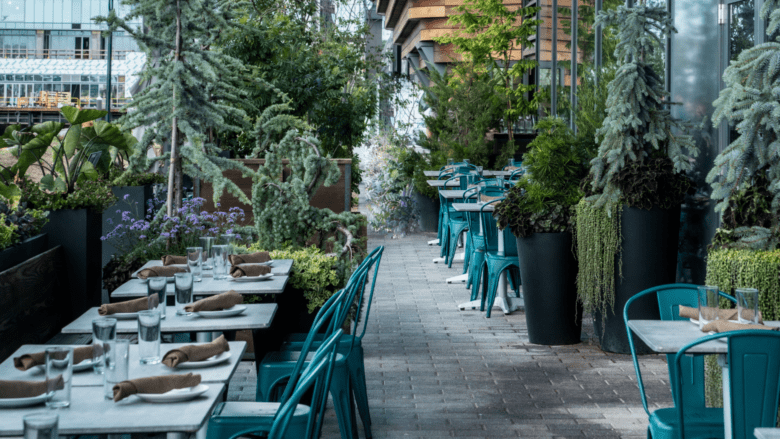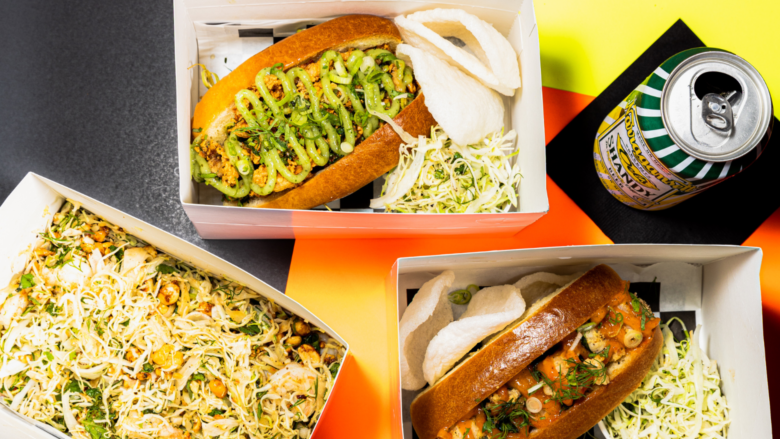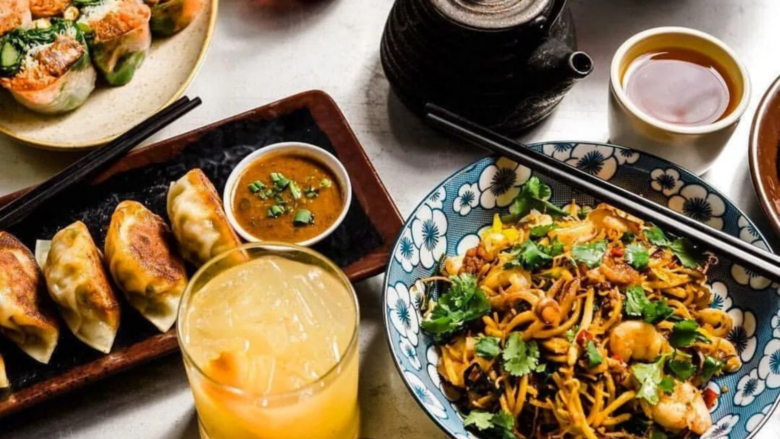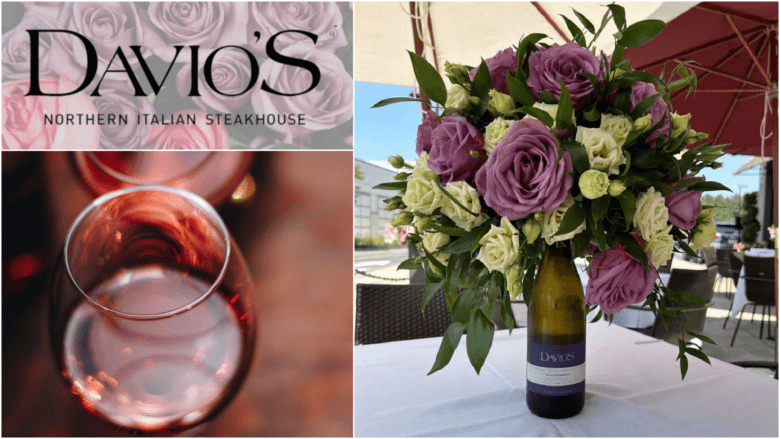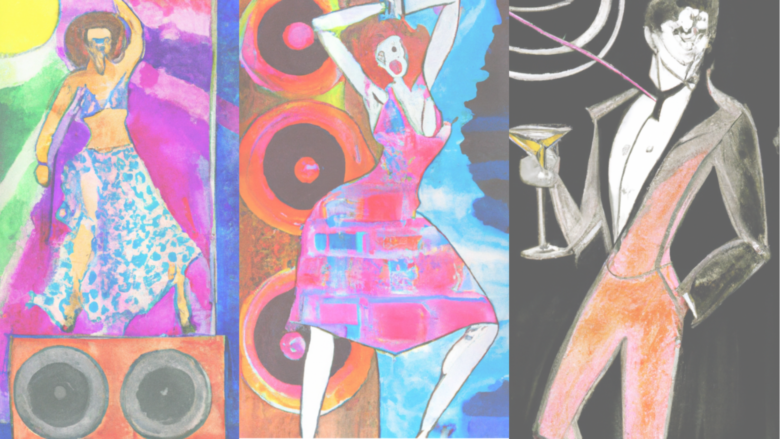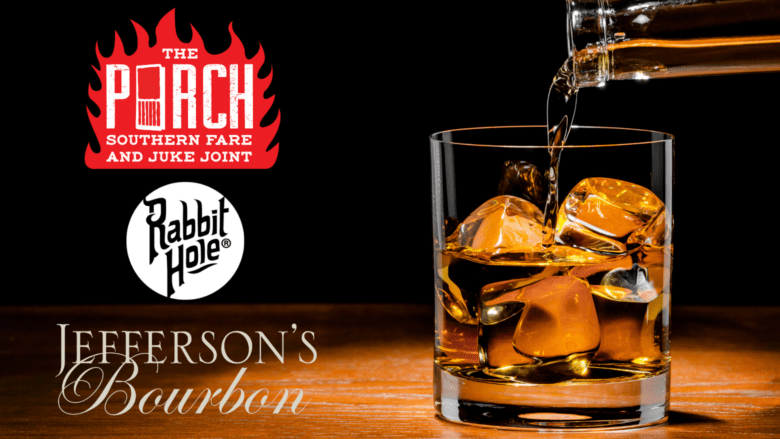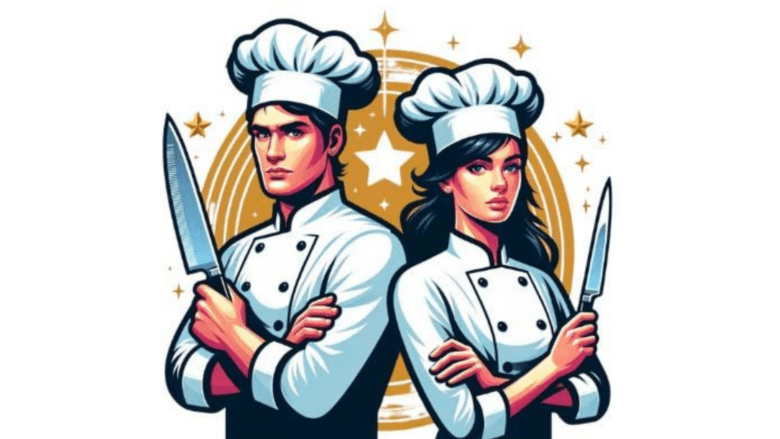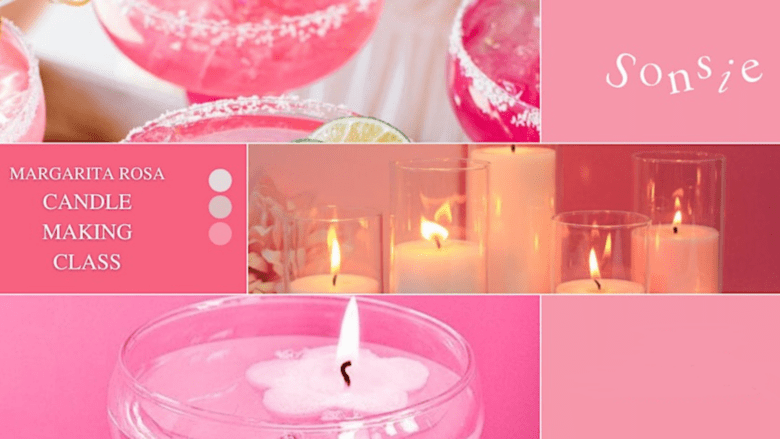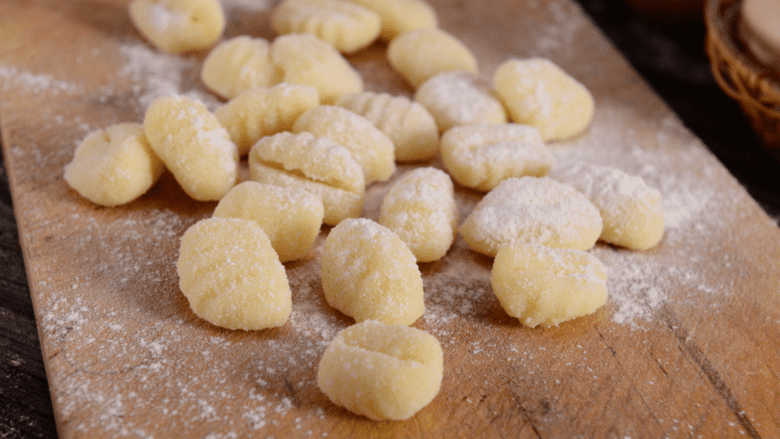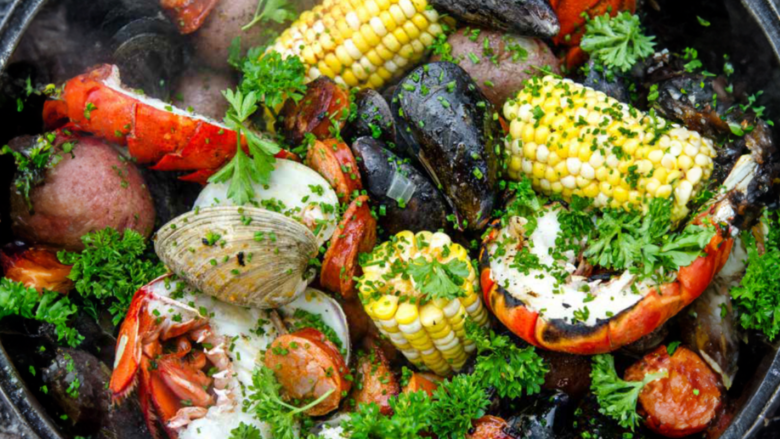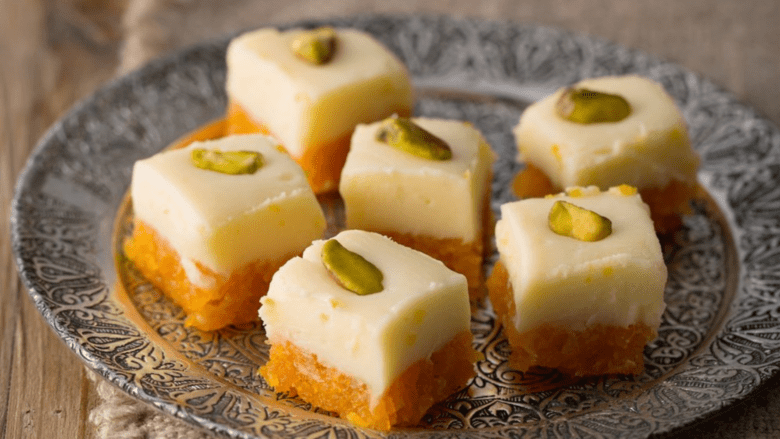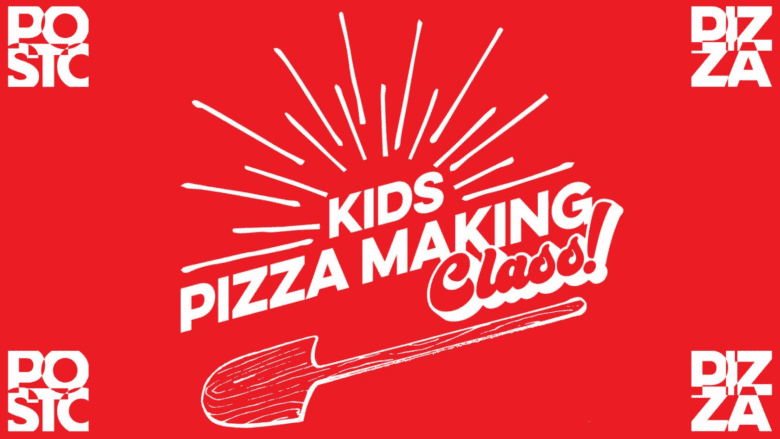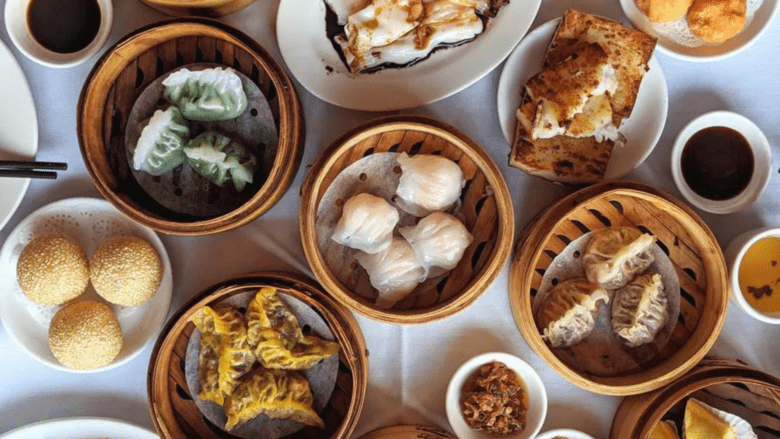Over the last few months, Katie Weismann hasn’t been able to spend as much time behind bar at Spoke — the intimate Davis Square wine bar was closed for indoor dining and then for a winter hibernation — but her creativity has soared. For the Bar Program Director, who’s been running the beverage program since March 2020, the pandemic provided an opportunity to experiment with the ways in which they reached their clientele. Weismann and her team knew they’d have to get crafty. So, they began their Cocktail Club, a program based on to-go cocktails, seasonal ingredients and drinks as a form of art. As they get back into the swing of things — Spoke is currently open for outdoor dining Wednesday through Saturday from 5:00-10:00pm — Weismann took some time to chat about Spoke’s cocktail program, how it’s changed over the last year and where it’s headed.
What were your pre- and post-pandemic trajectories? Where were you going before and where are you headed now?
I think the core of our ethos remained the same. But with everything that we had to work with, it brought us into new directions that we didn’t expect. We used to focus on lower ABV cocktails, thinking that maybe you’d have a cocktail first, and then move on to wine. And then, especially now, people are just coming out in full force wanting to drink cocktails, and I think it probably is a reflection of not being able to do those kinds of things at home. The pandemic gave me the space to really look at our back bar and bring it in the same space as our wine, where we believe in and know the producers that we’re bringing in and keep it fresh and rotating. We have so many regulars that are here multiple times a week who are always wanting to learn something new or try a new product so it keeps us on our toes.
How was it different for you working when you couldn’t be behind the bar?
It’s interesting, you can’t have the same in depth conversations, either catching up with regulars or talking about what we’re doing with cocktails, wine or producers. Social media helps. We have a pretty good engagement so we can put more information out there, when we can’t be tableside or have people sitting in front of you. It does take down the depth of our conversation, but we have such a great clientele. We have such devoted regulars that we like to communicate with each other in other ways. It’s a little tough in terms of making it as intimate as we do. But overall, I feel like we’ve been pretty successful and making people feel special.
What was one pivot that Spoke’s bar program undertook to make it through the pandemic?
When we were actually closed, I really wanted to figure out a way to work with our takeout and make it feel like it’s us there and not just the product. So we worked really hard on creating beautiful packaging to feel like you’ve received something, especially when there wasn’t much to look forward to. So I was doing drawings of each of the staff and including it into our packaging, and writing a little note. It allowed me to do a lot of design. My background is all art. So I do the social media, the design, the packaging, the photography. All of this has given me more space to do that. It feels so nice when you get something and you can see how much time has been spent on it. And it’s a pretty object that can be reused, too.
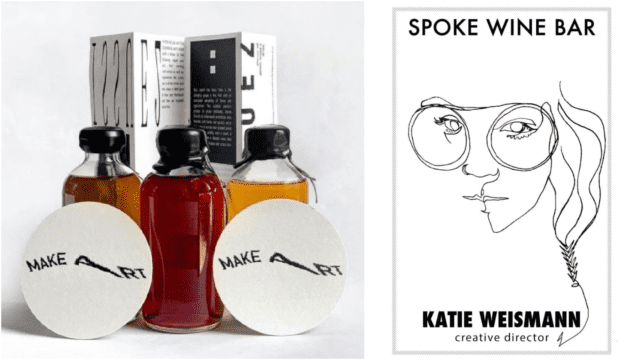
Spoke Cocktail Club Boxes (left) Katie’s drawings of the staff, otherwise known as “Spok-e-mon” cards (right)
What is the intersection like for you between art and cocktails?
It crosses over constantly. After we closed for the winter, Paul, Mary, and I did a three month Cocktail Club. And it was directly inspired by this piece of art from the 70s called ‘The Act of Drinking Beer With Friends is the Highest Form of Art’ [Tom Marioni, 1970]. Marioni would set up his studio with a table and chairs, a fridge full of beer, and then have friends come drink with him. They would drink, talk about art, draw, etc. Then the next day, people could come in and look at the aftermath. We wanted to do that in a way with cocktails. So we created these boxes with three cocktails and a bit of literature; we wanted to guide an experience around cocktails, as a means to conversation. In a way, the experience together becomes the art. Paul Butler was able to use his art and design background here as he took the lead in all of the packaging for Cocktail Club. He’s often behind the scenes helping with design (he also did our menu), but this was his baby. I was so grateful to have the opportunity to do this and so proud of what we put out. It’s such a shame that to go cocktails are ending and we won’t be able to do this again.
How did you create the cocktail boxes? What was the process like?
So we individually etched every bottle – we did a template with tape, then we painted on the etching cream, and then we washed it off. Each one has a shape. And then the next time around, we used oil based paints and painted each with a different type of leaf and pressed it onto the bottle. That’s the kind of personal touch – it’s very unique. And I feel like in that way we would keep people wanting to come back. I think it shows also that we really care about the regulars who want to still enjoy the experience as much as possible. It was really nice; people just blindly went in without knowing what they were gonna get.
Could you elaborate on the role of social media?
It’s always been important. But it’s become increasingly more important, especially when it was our main form of communication. It helped keep people up to date on what we were doing, whether it be holiday boxes or Cocktail Club. I think in general moving forward, it’s just a way for people to understand who you are as a whole. You know, you don’t get a full sense of who a restaurant is based on the menu. The way we take the photos, the way we describe things, who we decide to choose and highlight, it all goes into it. Instagram is like a portfolio for people to look at. But Instagram has been huge. We post something about our cocktails going on sale. And that night, we’ll have a bunch of orders. It’s like you can see that direct influence from Instagram. it’s a really good way to support each other, too, in the restaurant industry, like sharing things that other people are doing. I think we all kind of have a love hate relationship with [social media], but there is a lot of good that comes from it, like community support. Like Rebel Rebel’s Rosé for Resistance, and similar fundraisers. It’s good to get the message out there via Instagram.
Where are you finding inspiration these days?
My inspiration is a little all over the place, because I’m doing it in different formats. But there are definitely art and food magazines that I’m constantly looking at in terms of visual aesthetic. Instagram is huge for that, too.
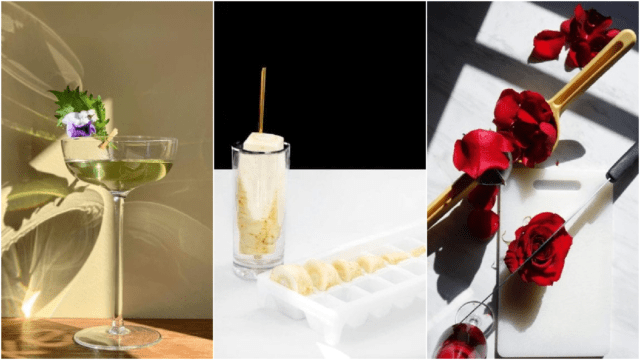
One of Weismann’s latest creations: So Fresh, So Clean // Le Pere Jules Calvados, tequila, Alessio Bianco, Batavia Arrack, shiso, lactic acid (left) Innovative and unique ingredients are often an inspiration for Katie’s cocktails such as parsnip (middle) and rose (right)
Are there any cocktail trends you’re eager to try?
I’m definitely interested in learning how to be more sustainable as time goes on. We’re always conscious of it, you know, starting with winemakers, moving into spirits, but also within our space, reusing things in the kitchen – we’re always in communication with the kitchen, using byproducts and whatnot, but different ways that we can lower our footprint. We’ve gotten so many of our bottles returned; people are like, I want you to be able to reuse this. When we first did our to-go cocktails, that was at the bottom: if returned we’ll give you, I forget exactly what our rate was, but let’s say $2 off.
Is there a most popular cocktail? How do you get feedback on those?
We’re very lucky in that we’re really comfortable with our clientele, and we get a lot of feedback. Sometimes it’s really surprising when I think maybe this will be like a more obscure cocktail, and a certain person will like it. We had this pretty crazy fish sauce ice cream cocktail that turned into a hot cocktail. And people really loved it. I thought it was like I’m really going for it here, but people liked it.
Where did you find the pieces to put that together?
It came originally from hot buttered rum, which was the creamy portion, and then with the fish sauce, that was an interesting addition to it, which actually came from our friend at Baldwin Bar who’d said that he really wanted to try fish sauce ice cream, and our chef made it, and it got incorporated into the cocktail. Plus, a long time ago we did a smoked cynar cocktail, but then the chef took those discarded wood chips and made an ice cream with it. So it’s really nice to go back and forth to the kitchen using whoever’s byproduct.
How did the pandemic affect your collaborative energy?
Oh, man, we are a four person staff, plus our dishwasher is great. Some of us live together – we are very tight knit. I was definitely nervous at the beginning, like what’s going to happen? You know, we live together, work together. But it just made it so much better. We are really lucky that we all have different strengths, and happened to have very similar visions which work really well together. It was Mary Kurth, the owner, co-chef Paul Butler, co-chef Kelcey Rusch and me. And it was really great to work collaboratively. We all have very specific strengths. So there isn’t a lot of butting heads over things, and Mary gives us a lot of freedom creatively. We’re really lucky to have such a good team. For example, someone will forget to pick something up and we’ll drop it for them. We’re even super personal with our guests. It’s such a nice community, with Dave’s Fresh Pasta next store, and then The Boston Shaker. We could run down the street be like, Can I have this please? And they’ll lend it.
I’m hoping that stays with the restaurants that have survived, really supporting each other. Before this all happened, we’d been doing some pop-up scenarios with some of our friends who are brand ambassadors. We would have them come and do a bar takeover, and we would do a whole cocktail menu using their product. And that would also help – their support base would come over here, when maybe they wouldn’t come before and we’d get to support each other.
How can your clientele come in and best show their support?
Go to city council meetings and tell them that we need real infrastructure changes to support the restaurant community. We can’t keep telling restaurants to be creative and see where it gets them (even though we have all been really impressive in that regard)! And, of course, come dine with us, be patient with new guidelines, and then come dine with us again.
I don’t know if everyone realized how much they need restaurants and how much they bring excitement and escape and romance to their life. I think everyone’s becoming more respectful and appreciative and continuing to come out at their comfort level and keep supporting.
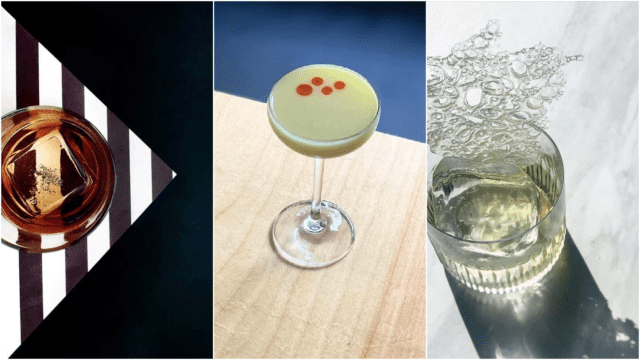
Some of Weismann’s latest creations: Paw Paw Old Fashioned // Santa Teresa 1796, paw paw, Thai basil (left) When the Sun Comes Up // Mango rum, Becherovka, cardamom, turmeric, yogurt, harissa oil (middle) Everything is Connected // rum,, baijiu, fermented parsnip brine, lapsang souchong, caramel (right)
What’s on the horizon for Spoke?
I’ve been making our own vermouth which is a staple on the menu, always, so it’s the ingredients that change. We had a rhubarb one come out on the opening menu. I did some dandelion foraging for the next one. I learned how to make it when I worked at The Hawthorne; it’s very sad that they are no longer. Then I brought it over here and just kept doing it. Our regulars are really interested to come and see if there’s a new one. It’s really fun for me whenever I get to forage local stuff – I enjoy doing it… We had a sumac cocktail in the fall, and that was a really fun to-go pick.
Do you have any events coming up at Spoke?
Let’s see. We’re starting to do some chef pop-ups; we want to get our friends involved. We know some people at Comfort Kitchen. And then our friend Kwasi Kwaa, who does African food, and he did a pop up before we closed for the winter on a Sunday or Monday. We hope to get back to “meet the winemaker” nights, too. And then, like I said about doing some cocktail takeover. Plus, Mary has this little side project called Frank’s Out-back which is a hotdog pop-up. We did it twice over the summer last year. It was really good. Mary had been talking about it since I met her. I was like, this is the time. We did to-go cocktails. canned beer and wines which was fun.
How do you think the pandemic will affect the bartending, for you, here at Spoke, and in the Greater Boston area?
Who knows what will happen, but I hope we’ve all realized how important restaurants and bars are to our existence and communities. I hope there is the opportunity for people to open new spots and bring new concepts and spaces to the city. Obviously, the outdoor spaces will be more elaborate, too. For us, I think we’ll still continue doing to-go stuff. And that allows me to package things and create the half-experience when we can, and learn more about how to do the to-go thing. Hopefully, cities will let it be a long term thing, the to-go [cocktails]. It took so long for Massachusetts to get here with that. But it was so infused with the experience, and our hospitality. I hope that I can continue to do that in a take home form.
This interview has been edited and condensed for brevity and clarity.
Back Behind the Bar is four-part series that shares the stories of beverage professionals as they reemerge post-pandemic and get back behind the bar.


